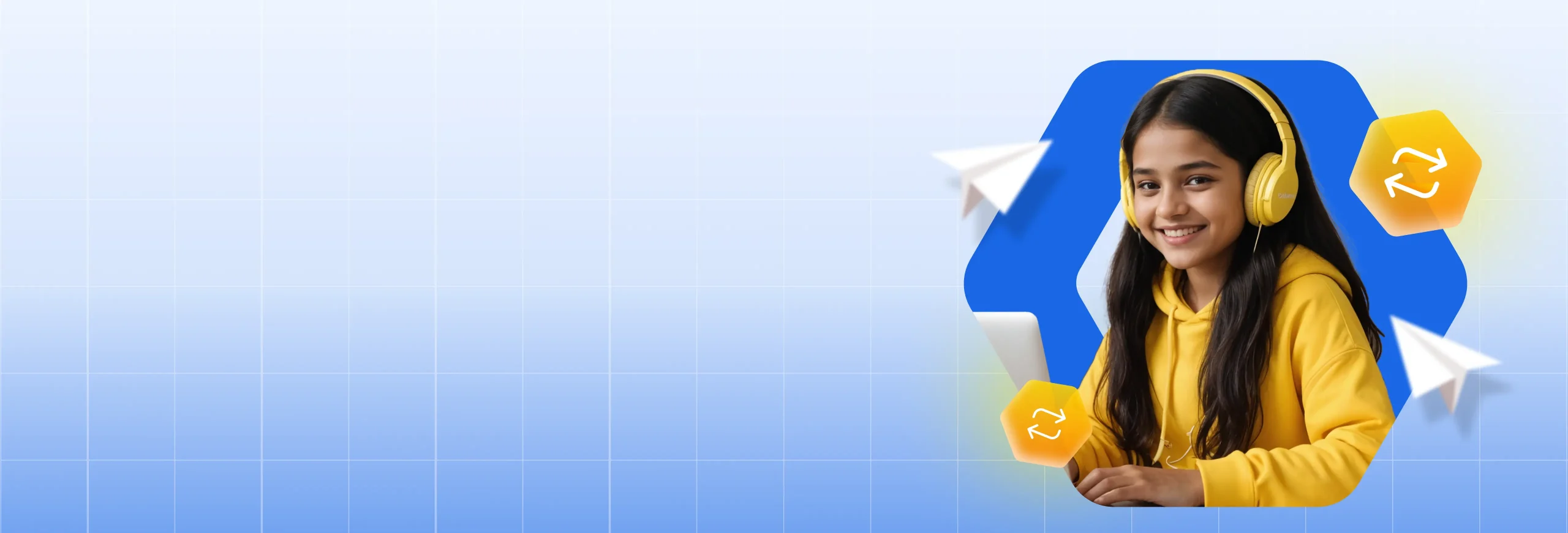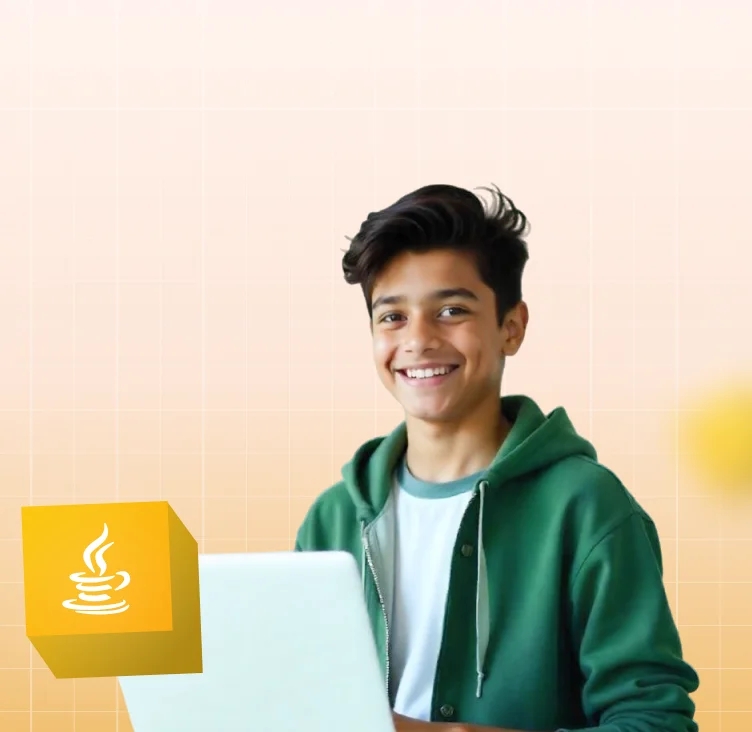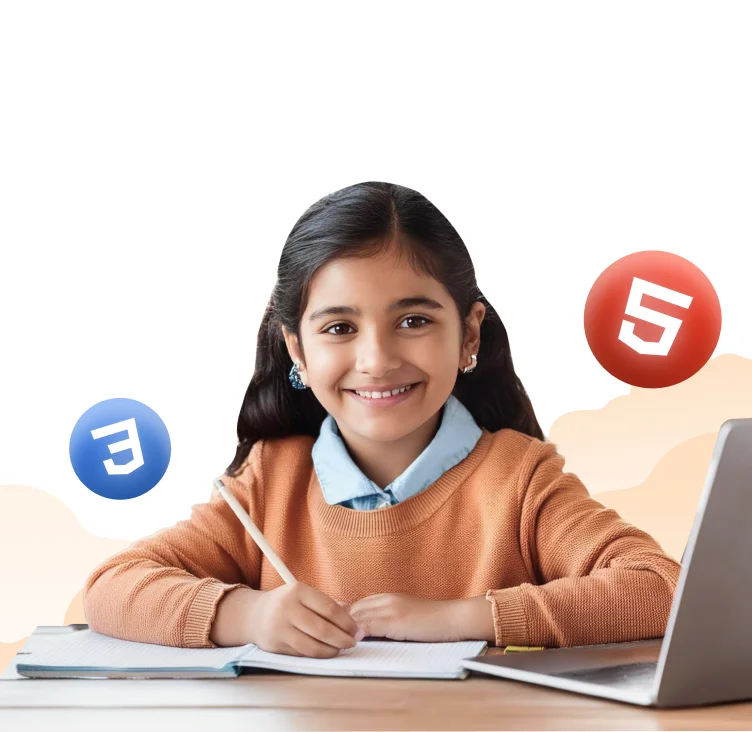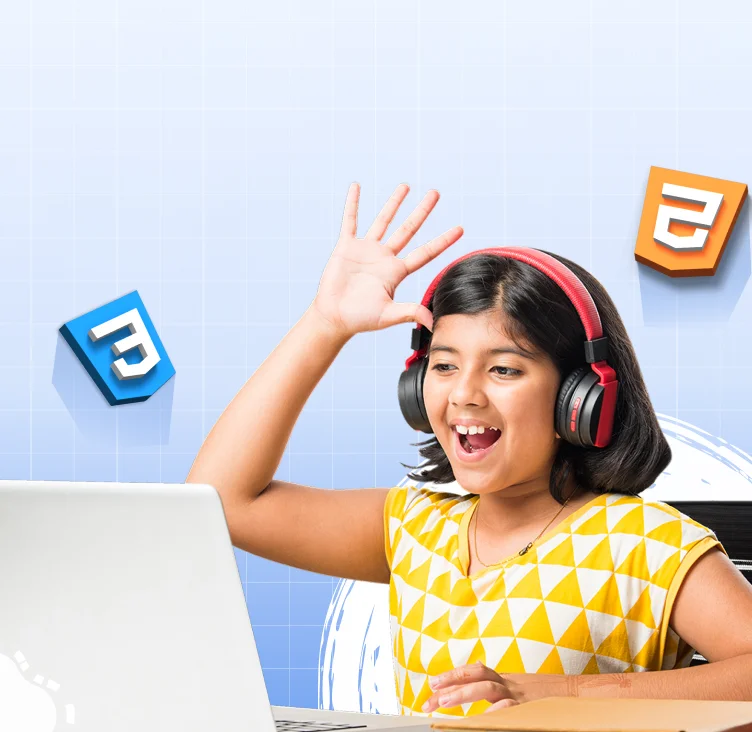Did you know? Screen time among children is at an all-time high. A recent survey found that 42% of Indian children under 12 spend an average of two to four hours daily on electronic devices. And with the summer holidays approaching, this number is only expected to rise.
But what if your child could create games, animations, and even simple apps instead of merely watching videos or playing games?
That’s where coding comes in, not as another “subject” to study, but as a fun and interactive way for kids to explore their creativity while developing valuable lifelong skills.
Now, we know what you’re thinking:
“There are over 8,000 programming languages; how do I pick the right one for my child?”
Don’t worry! We’ve done the hard work for you and narrowed it down to two of the best beginner-friendly options. In this blog, we’ll break down Scratch vs. Python to help you decide which is the best fit for your child. Let’s dive in!
What is Scratch?
When introducing kids to coding, choosing the right programming language can make all the difference. Scratch and Python are two of the best beginner-friendly options, each offering unique advantages that make learning to code fun, interactive, and rewarding.
Why Scratch Is a Great Option
Scratch, developed by MIT, is a visual programming language where kids can drag and drop code blocks to create games, animations, and stories, no complex coding required! It’s an interactive, play-based approach to programming, making it ideal for beginners as young as 6-7 years old.
Stress-free learning is exactly what parents look for when introducing coding to their children. Scratch creates a win-win situation for both parents and kids because:
- It’s like digital LEGO, where kids can learn coding concepts without complexity.
- It promotes healthy screen time. Unlike passively consuming videos for hours, Scratch encourages active learning and creativity.
Scratch uses a block-based coding system, meaning kids can create programs without typing complex syntax. This allows them to focus on the logic behind coding rather than getting stuck on technical errors.
With Scratch, kids can build animations, games, and interactive stories by simply dragging and snapping blocks together, making it a great way to learn through play.
Gone are the days when we were obsessed with coloring books, new stationery, and MS Paint. This can be the new healthy obsession for kids because it combines creativity with technology in a way that’s both engaging and educational.
One of Scratch’s biggest advantages is that it’s pre-programmed to be translated into multiple languages. All anyone needs is an internet connection (or Scratch Desktop), and they can create projects and connect with people from all over the world.
Scratch isn’t just a stepping stone to more advanced programming, it’s a playground for creativity, logic, and collaboration that makes learning to code an exciting and rewarding experience.
Who Might Find Scratch Too Basic?
Scratch is a fantastic starting point, but it’s not for everyone. Here’s who might feel ready to move on:
→ For Kids Already Comfortable with Coding
If your child has been coding for a while and already understands the basics, Scratch might feel too simple. They may be ready for Python, JavaScript, or even C++ to build more advanced projects.
→ For Teens Who Want to Write Real Code
Scratch is a visual, block-based language, which makes it perfect for younger kids (ages 6-12). However, older kids (12+) who want to dive into real-world programming may find it limiting.
→ For Anyone Looking for Career-Ready Skills
Scratch is a fun introduction, but it’s not a professional programming language. If the goal is to prepare for coding jobs or real-world applications, starting with Python would be a great next step.
While Scratch is an excellent way to spark interest in coding, kids who are ready for more complex challenges will benefit from text-based languages that open up a world of possibilities.
What is Python?
Python is one of the best beginner coding language for kids ready to take the next step in their coding journey. Unlike other languages that can be intimidating with complex syntax, Python is simple to read, easy to write, and incredibly powerful.
Python helps children think logically, solve problems, and even build real-world projects like chatbots, simple games, and interactive websites. Because it’s widely used in the industry, learning Python early gives kids a head start for future careers.
But beyond job prospects, it’s an excellent way to develop analytical thinking and creativity, making it a great choice for kids who want to explore coding beyond just fun and games.
If a child has already explored Scratch or other visual programming tools, Python is the perfect next step. It introduces real coding concepts without overwhelming complexity.
Unlike Scratch, which is designed for younger kids, Python is ideal for pre-teens and teenagers who want to dive into real-world coding while still keeping it simple and engaging. It bridges the gap between beginner-friendly block coding and professional programming, making it a smooth transition for kids ready to take on more advanced challenges.
Scratch vs. Python: A Detailed Comparison for Kids
| Feature | Scratch | Python |
| Type of Language | Block-based, visual programming | Text-based, real-world programming |
| Best for Beginners? | Yes, ideal for young children with no coding experience | Yes, but requires basic typing and logical thinking |
| Suitable Age Group | 6-12 years old | 10+ years old |
| Ease of Learning | Very easy, drag-and-drop interface | Simple syntax but requires understanding of structure and indentation |
| Coding Style | Uses blocks that snap together | Uses typed commands and functions |
| Pros | – No syntax errors – Highly visual and engaging – Teaches problem-solving and creativity – Beginner-friendly for kids | – Used in real-world applications – Simple and readable syntax – Supports AI, automation, and data science – Strong foundation for future coding skills |
| Cons | – Limited for advanced projects – Cannot be used for web or app development – Not used professionally | – Requires typing, which may be challenging for younger kids – Prone to syntax errors like indentation mistakes – Less visual and interactive |
| Future Applications | – Builds strong logical thinking skills – Good for game design and storytelling – Helps transition to real programming languages | – Used in AI, web development, automation, and robotics – Ideal for building apps, games, and data-driven projects – High demand in tech careers |
| Career Relevance | – Mostly educational, not used in industry-level coding | – One of the most in-demand programming languages worldwide |
| Learning Approach | – Learn through play and experimentation – Best for self-paced learning | – Best learned through structured projects – Encourages problem-solving with hands-on coding |
| Offline Usability | Can be used with Scratch Desktop | Works with offline Python IDEs like IDLE, PyCharm, or Thonny |
| Best for Which Kids? | – First-time coders who enjoy animations and storytelling – Visual learners who prefer interactive learning | – Kids ready to move beyond basic coding – Those interested in math, science, or technology |
Why Scratch and Python Are More Than Just Coding
Now that you have got the big list of pros and cons for Scratch Vs Python, let’s take a step back and get a good view of the importance of coding for children (not the usual talk about careers and future readiness) The real advantage of learning to code early goes far beyond jobs. It shapes a child’s overall development in ways that are often overlooked.
“Coding is a way of expression and not just a way to solve problems”
Here’s how both Scratch and Python can help your kid:
1. Builds Strong Logical Thinking from an Early Age
Scratch introduces kids to sequencing, loops, and conditions in a fun, visual way, while Python takes it further with real-world problem-solving. This foundation helps children develop structured thinking that benefits them in academics and daily life.
2. Strengthens Math & Science Skills
Both Scratch and Python reinforce patterns, logic, and algorithms, helping kids understand mathematical concepts naturally. Python, in particular, is used in data science, AI, and simulations, making it valuable for future STEM careers.
3. Enhances Creativity and Expression
Scratch allows children to animate stories, build games, and design interactive projects, giving them a creative outlet. Python supports app development, robotics, and web programming, offering endless possibilities as they grow.
4. Develops Real-World Problem-Solving Abilities
Coding is about breaking down challenges and finding solutions. Scratch teaches step-by-step logic, while Python enables kids to apply their skills to AI, automation, and web development, all critical in today’s world.
5. Prepares Kids for Future Careers
Python is widely used in industries like tech, finance, healthcare, and engineering. Early exposure gives kids a head start, making them comfortable with coding when they pursue higher education or jobs.
6. Encourages Independent Learning and Persistence
Debugging code teaches kids resilience and patience. Whether they’re fixing a bug in Scratch or writing Python scripts, they learn to analyze mistakes and improve solutions—a key skill in any profession.
7. Bridges the Gap from Playful Learning to Professional Coding
Scratch makes the first step into coding stress-free, while Python transitions kids into real-world applications. Together, they provide a smooth learning path from fun experimentation to practical programming.
Supporting Your Child’s Coding Journey with HackerKID
Introducing children to coding can feel overwhelming, but HackerKID simplifies the process with a structured and engaging learning experience. Whether your child is starting with Scratch or moving on to Python, HackerKID provides the right platform to develop essential coding skills at their own pace.
A Step-by-Step Learning Approach
HackerKID offers a well-structured learning pathway that ensures kids progress gradually without feeling overwhelmed. The platform adapts to different skill levels, making it easy for beginners while providing challenges for more advanced learners.
Making Learning Fun and Engaging
Unlike traditional learning methods, HackerKID incorporates gamified lessons, interactive challenges, and hands-on projects to keep kids excited about coding. They do not just watch tutorials but actively build animations, games, and apps, making learning a fun and rewarding experience.
Live Mentorship and Community Support
HackerKID provides live mentorship, where experienced instructors offer guidance and personalized feedback. Kids also become part of a supportive coding community, interacting with peers, sharing ideas, and working on collaborative projects. This social aspect enhances learning and encourages creativity.
Building Real-World Skills
The platform emphasizes practical application by encouraging children to work on real-world projects. Whether designing a game, developing an app, or solving coding challenges, kids gain confidence and hands-on experience that goes beyond theoretical knowledge.
Why Choose HackerKID?
HackerKID ensures children receive top-quality coding education in a structured, fun, and interactive way. Whether they want to explore coding as a hobby or prepare for future opportunities, HackerKID provides the right balance of learning, engagement, and practical application.
Learning tech has never been this fun! Say goodbye to dull quizzes and hello to Buzzer, the ultimate computer science and technology MCQ game for kids! Pick your favorite topic, hit the buzzer, and tackle exciting gamified questions. Whether you’re playing for fun or competing, every round is an adventure. Think fast, answer smart, and climb the leaderboard. Play Buzzer now!
Scratch vs Python for Kids
The ultimate goal is not just to introduce children to Scratch or Python. While the Scratch vs Python for kids debate helps in choosing the right starting point, what truly matters is equipping them with a skill that makes learning easier and more engaging. Coding is more than just programming, it teaches problem-solving, logical thinking, and creativity. Whether a child begins with Scratch or advances to Python, they develop a structured mindset that helps them navigate not just technology, but everyday challenges.
By fostering a love for coding early on, we give them a tool that makes learning a lifelong adventure.
FAQ
- Is Scratch easier than Python?
Yes, Scratch is generally easier for beginners, especially children, due to its visual, block-based interface that simplifies coding concepts. - What is the disadvantage of Scratch?
Scratch’s simplicity limits its use in developing complex applications, making it less suitable for advanced programming projects. - Why would someone use Python instead of Scratch?
Python offers more flexibility and is favored for complex programming tasks like web development and artificial intelligence, making it suitable for real-world applications. - Is Python hard for kids?
Python is considered easy to learn, even for kids, due to its simple syntax and readability, making it a good starting point for beginners. - Is Scratch a good start to learn programming?
Yes, Scratch is a good starting point for learning programming, especially for younger children, due to its visual interface and focus on fundamental coding concepts.








